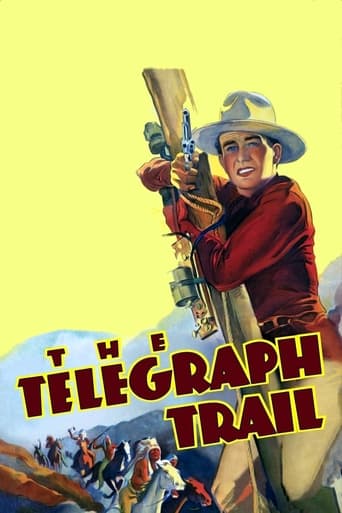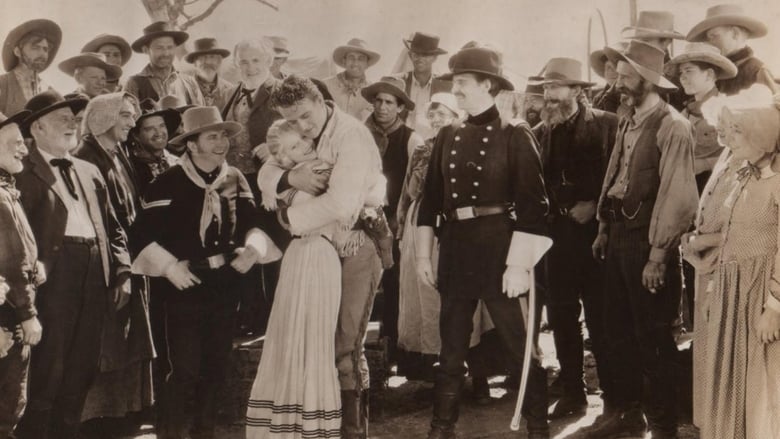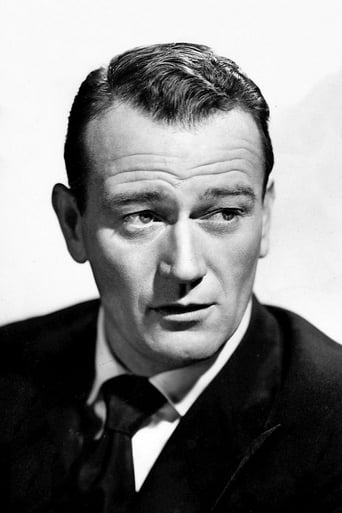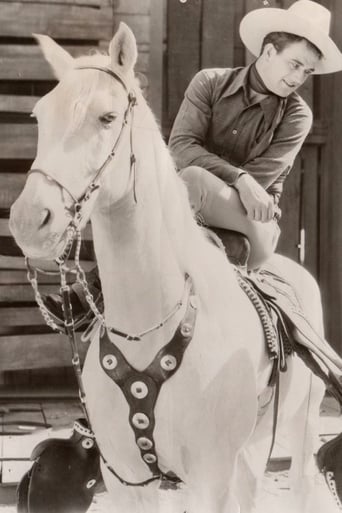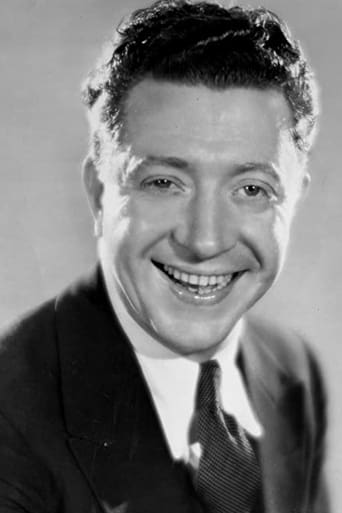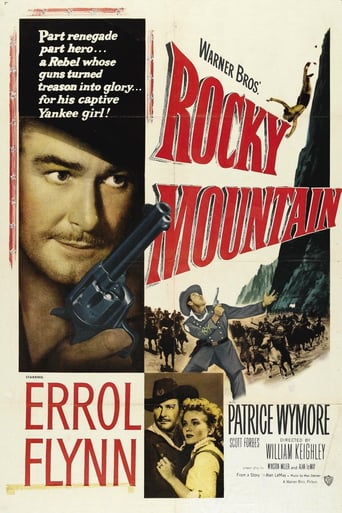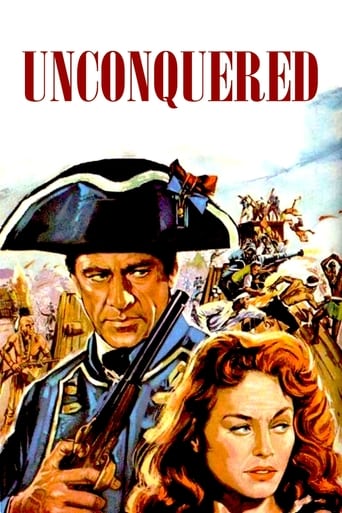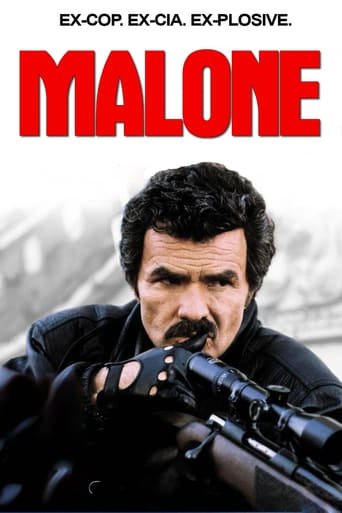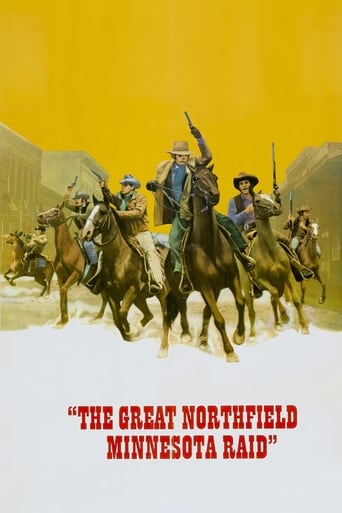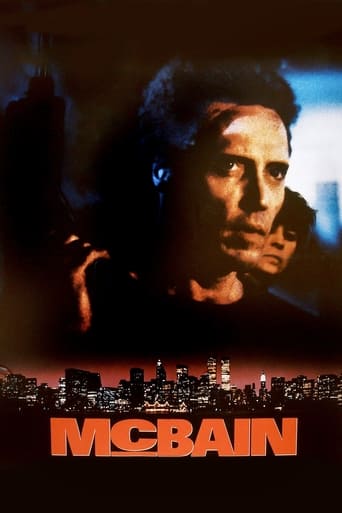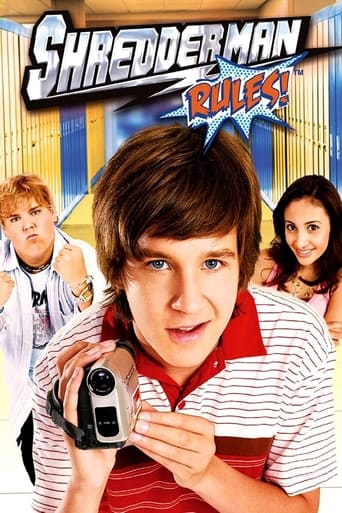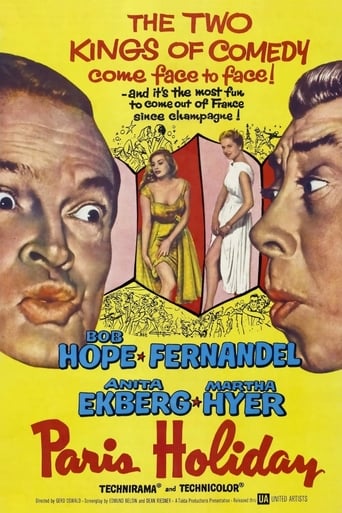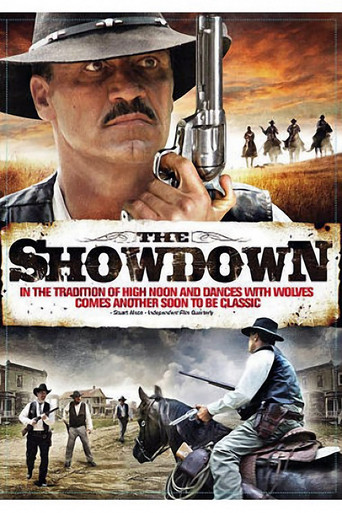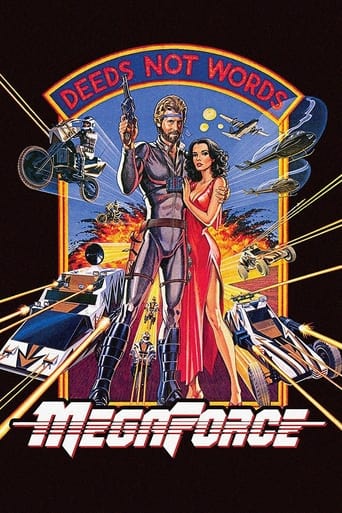The Telegraph Trail (1933)
A greedy businessman-turned-renegade foments an Indian uprising against the coming telegraph to perpetuate his economic stranglehold on the territory.
Watch Trailer
Cast


Similar titles
Reviews
The best films of this genre always show a path and provide a takeaway for being a better person.
The acting in this movie is really good.
This movie feels like it was made purely to piss off people who want good shows
Exactly the movie you think it is, but not the movie you want it to be.
The Telegraph Trail (1933)** 1/2 (out of 4) A company is trying to hang telegraph wire out West but their men keep coming under attack by Indians so they send John Trent (John Wayne) out there along with his sidekick Tippy (Frank McHugh). Once out there John strikes up a relationship with Alice (Marceline Day) and begins to realize Gus Lynch (Albert J. Smith) is actually the one making the Indians attack.This "B" Western certainly shows its low-budget nature but if you're a fan of such films then there's enough going on here to keep you entertained throughout the rather short running time. If you've seen enough of these films then you already know that they rarely have much of a story or at least much of an original one. The entire bit with telegraph wire had already been done countless times by 1933 but what's one more film? The highlight is certainly the cast with Wayne in good form as he obviously has no problem playing the hero. Day is good in her role as is Smtih in his. Duke, the horse, is back once again with his name in the credits right by Wayne. I also thought McHugh added some nice support and gets the biggest laugh in the film when he gives his silly one-tone laugh.With that said, the film comes up ultra cheap at the end when the majority of the big battle is taken from other movies. The footage is obviously from a silent movie so that takes some points away since they couldn't even stage their own scenes here.
Another B western from the early '30s with a young John Wayne and his horse Duke. A greedy white man is stirring up Indians to attack men installing telegraph lines. Army scout Wayne is sent to investigate. Frank McHugh plays Wayne's sidekick. He seems really out of place in a western. Get back to the city with Cagney, Frank. Marceline Day plays the inevitable love interest. Her character is responsible for some of the goofier parts of the plot. But she's likable and pleasant enough. It's a routine but enjoyable western with some comedy and romance. Nothing to write home about but Wayne fans will probably enjoy it for curiosity's sake.
This kid-friendly Oater was obviously intended for the Saturday morning double-features which droves of kids attended in the 30's and 40's. Mom & Dad dropped you off while they did the weekly shopping and you had a double-feature, a couple of cartoons, a 3-Stooges short and a Movietone news to entertain you, all for a dime. I know because I saw hundreds of them. Anyway, about this picture, it pays very little homage to the so-called plot which involves something to do with the new invention of the telegraph bringing communication across the continent. It has hundreds of extras (they must have been cheap to hire in those days) dressed as settlers, cavalry or Indians backing up the star (John Wayne) and the requisite pretty lady played by Marceline Day. In those days, the studio executives must have been convinced that the Cowboy and his faithful horse sidekick (ala Roy Rogers and Trigger) was a winning formula, so they paired John Wayne with a beautiful white stallion named Duke. The major attraction of this movie is the continual series of sight gags and gaffes which we never noticed as kids. In one scene, John Wayne is on top of a telegraph pole sending a message back to the Fort and a crowd of 10-12 Indians rides up and begins shooting at him. Wayne pulls his trusty six-shooter, fires once, and kills the Indian with the headdress. THEN WAYNE PUTS HIS GUN BACK IN HIS HOLSTER! What kind of direction was that? Can you believe John Wayne ever quit fighting a hoard of enemies in his life? Well, he does in this movie. I guess it was because he wanted to wait until the Indians fired off a volley at him; this would allow him to pretend to be hit so that he could fall off the pole (ouch!) and fake his death. Naturally, the gullible Indians were fooled, so they rode off at an accelerated gallop (all the galloping scenes are speeded up about 20% to make things more exciting), and before they have gone 50 yards, we see John Wayne getting to his feet. Then we find out that he wanted the feathered headdress so he could strip off his shirt (showing the manly Wayne chest), don the headdress and, pretending to be an Indian, join the Indians attacking the settlers, and then slip through the line of wagons (in a circle, naturally) and reenter the camp where he can join up with the beautiful girl. Of course, he can't begin fighting the circling Indians until he ducks into a tent and grabs a beautiful fringed-leather shirt and puts it on. One must be properly dressed when fighting Indians! All in all, this movie is fun to watch and if you are an old codger like me, it will bring back lots of wonderful memories of all those Saturday mornings long ago.
This early John Wayne western has the frequently used plot of some baddies convincing indians that the white men are up to no good, in this case by building a telegraph line to connect the east and west. But I still had some fun watching it, mostly because of the comedy by both Frank McHugh and Otis Harlan. In their funniest scene, they get drunk while the indians are attacking and they are bleary-eyed enough to think one bullet fells as many as 8 indians. The scene itself, in the middle of a battle in which many are killed, indicates director Tenny Wright did not direct with a heavy hand; I sensed a light-hearted touch throughout, which was a welcome change from most of these westerns. I also laughed whenever some clichéd event occurred, such as the love interest, Marceline Day, overhearing the the baddies talking about the upcoming ambush and getting the information to Wayne. And Wayne's horse, Duke, enters the fight by kicking indians when he was in a tent and observes their silhouettes against the tent wall. No wonder he was billed second in the opening credits, but I still wondered how the other actors felt about being outbilled by a horse.

